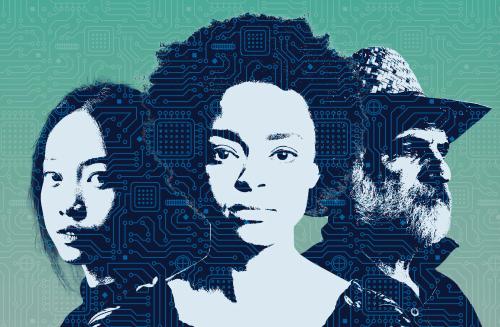Frequently we are asked: Isn’t our emphasis on the importance of digital skills for young workers an embrace of the very “computerization” that’s going to automate away millions of jobs in the future? Might such a focus expose young workers to disruption later on?
In some ways, both questions seem plausible, especially as artificial intelligence raises questions about the long-term centrality of coding and other digital occupations. After all, it’s absolutely true that in the long run, “soft” skills that stress what computers can’t do may matter more than anything they can.
And yet the truth is that according to our recent analysis of the digitalization of the workforce, digital skills—at least in the next decade or so— are much more of a safeguard against automation than risk factor for it.
Not only is there the simple fact that our analysis of the last two decades shows a consistent, statistically significant wage premium for computer skills—one that has almost doubled since 2002.
Beyond that, and more directly to the point, our data also suggest that digital skills—and not just general education levels—have a specific positive influence on workers’ ability to avoid a displacement by automation.
To explore this, we compared some 600 occupations’ digital scores to their “automation” potential, as quantified by the McKinsey Global Institute’s estimates of the share of an occupation’s overall task content that could be taken over by machines through the adoption of currently demonstrated technology. By employing a number of statistical tests, we consistently found a solid negative correlation between a job’s increased digital content and the share of its tasks vulnerable to automation. That is, the more digital a worker’s job is, the less vulnerable it is to automation.
See, for example, the plotting below of the average automation potential of major occupational groups by their mean digital score:

To the left, occupations with low digital content—such as personal care and transportation—rate as highly automatable, whereas to the right, highly digital occupations, such as computer jobs and management, rate as highly resilient. To summarize the data more broadly, nearly 60 percent of the task content of low-digital occupations appears susceptible to automation, compared to only around 30 percent of tasks in highly digital jobs. These numbers range from over 85 percent of the task load in production occupations to less than 30 percent for computer occupations.
In sum, workers with superior digital skills tend not only to earn higher wages, but they also appear less exposed to automation-driven displacement.
In that sense, computer skills are hardly the beginning of the end. They are an essential literacy needed to help people work alongside the machines.
The Brookings Institution is committed to quality, independence, and impact.
We are supported by a diverse array of funders. In line with our values and policies, each Brookings publication represents the sole views of its author(s).








Commentary
Highly digital jobs are less likely to be automated
June 27, 2018